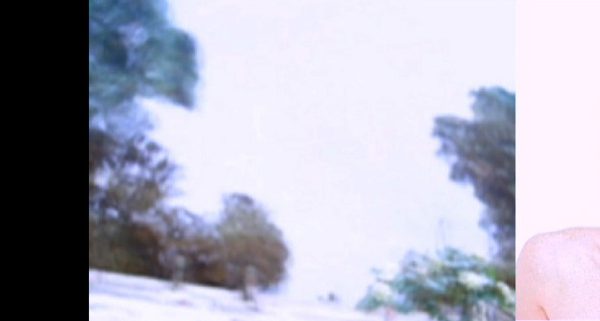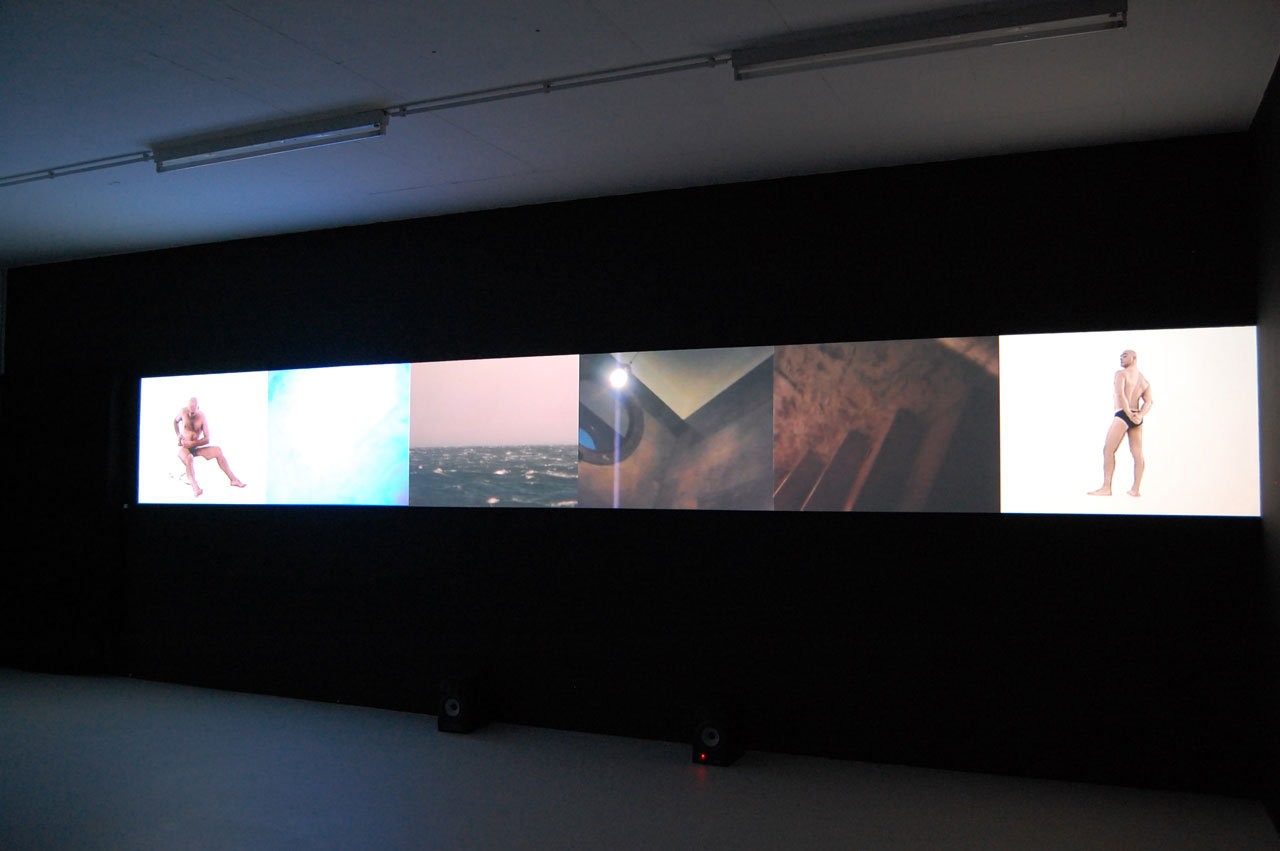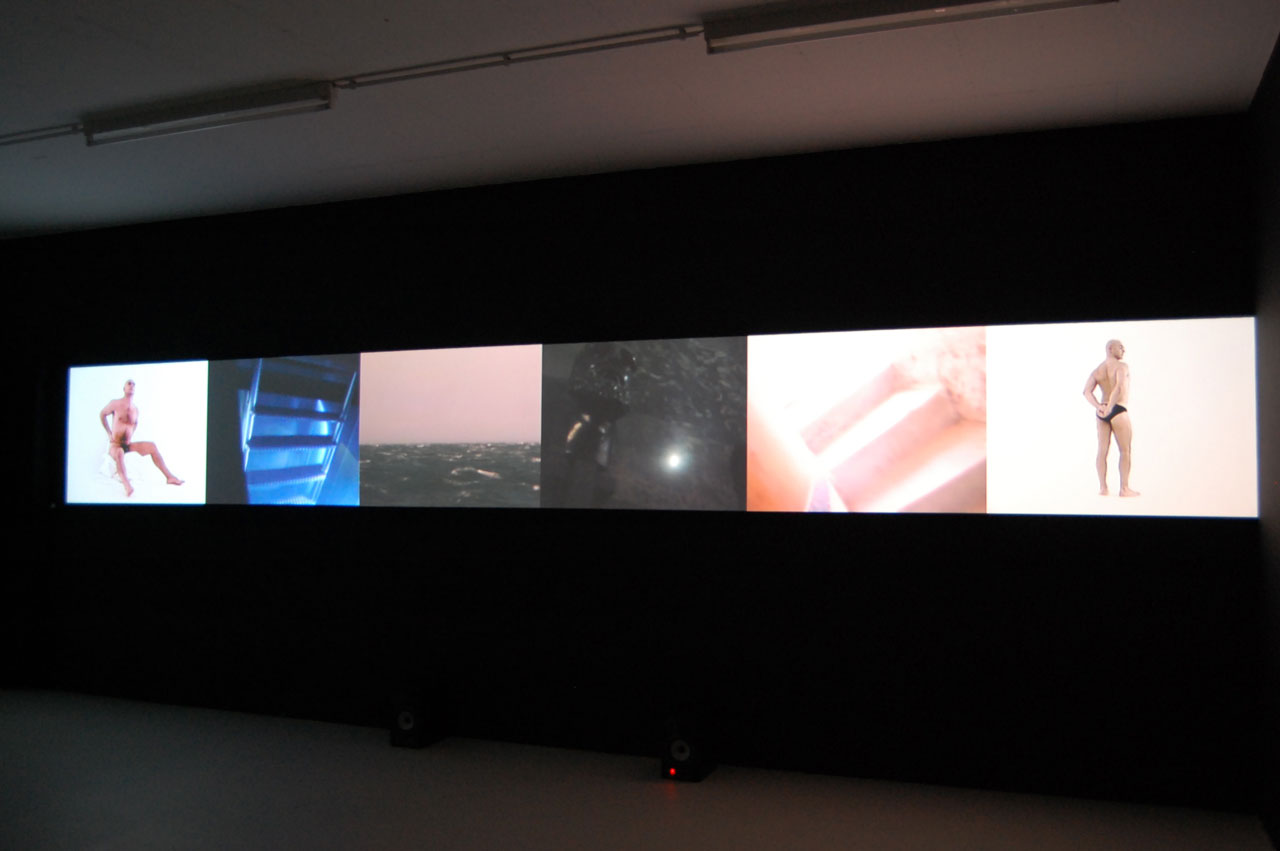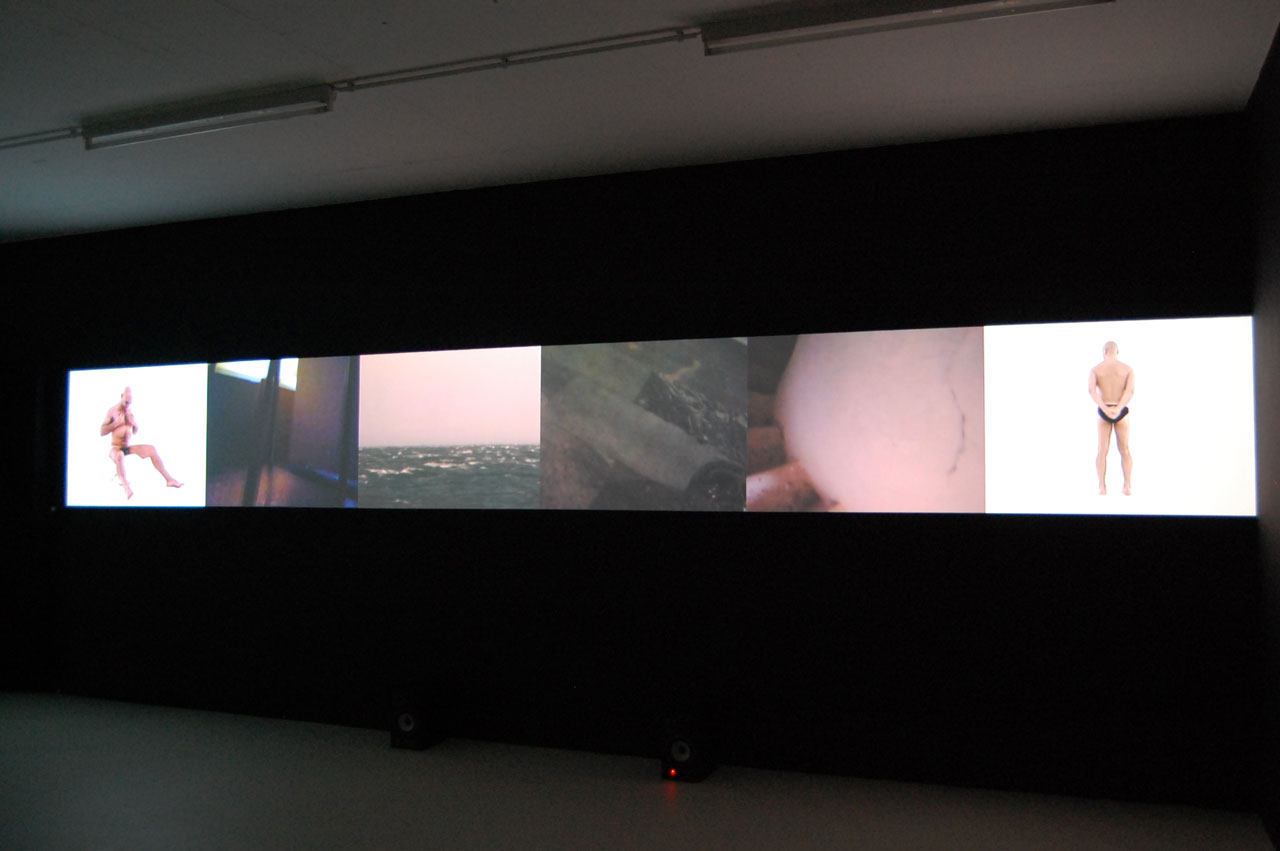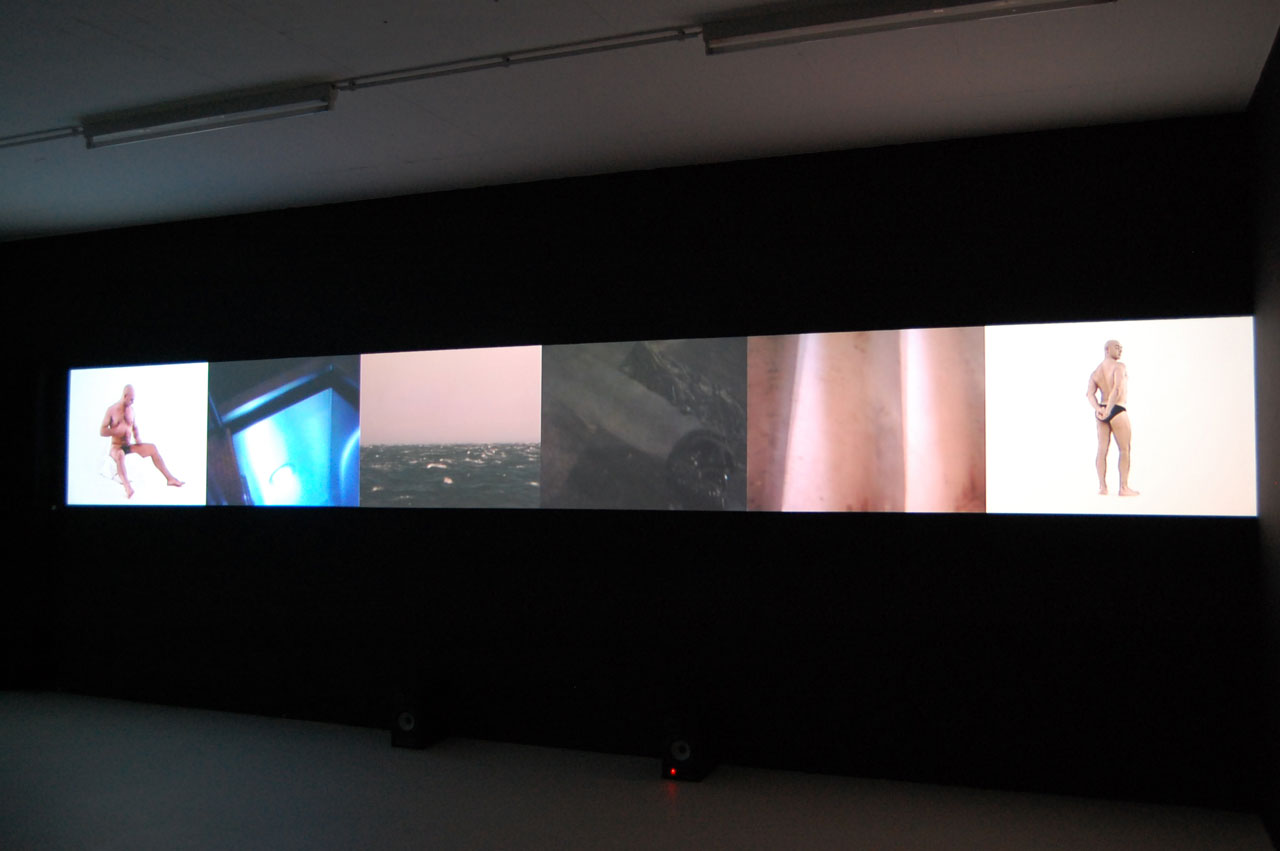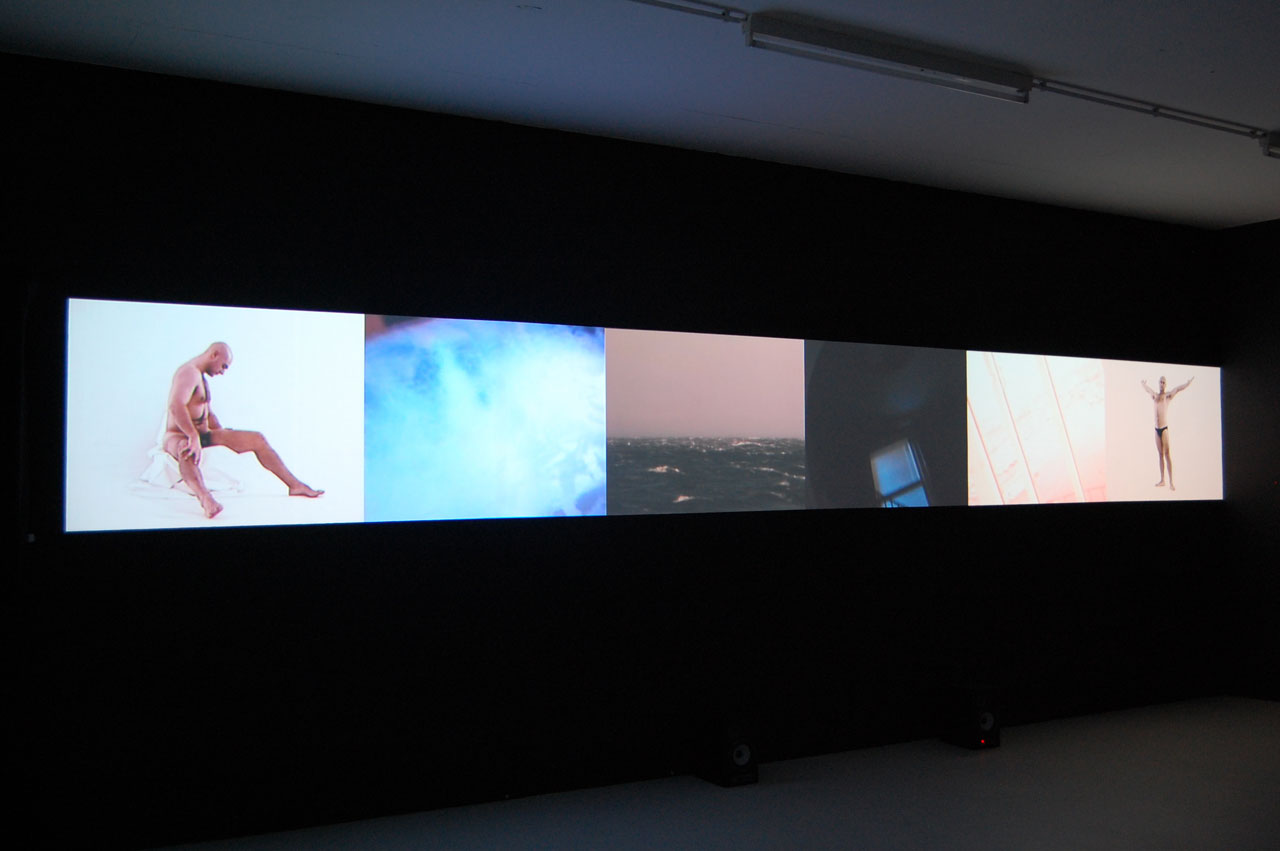Masculinity in Poetry. Beauty and Magic.
Paolo Ravalico Scerri
14 February – 29 March 2009
The CACT – Centre of Contemporary Art in Canton Ticino – opens the 2009 season with an exhibition dedicated to PAOLO RAVALICO SCERRI (Trieste, 1965), the Italian artist who has always worked in the medium of video, focusing it on man, his otherness and his multiple identities. Never so much as now has his work been echoed by the unfolding of contemporary events, inserting a grating militancy and poetic vision of the aesthetic and spiritual body into his concept of the male identity. Nothing stops at form and stylistic formalisms: everything penetrates into his internal world with candid intimacy and disarming sensuality, amplifying it towards humanity. There is something magical and cathartic in his artistic language, in the sensual way he has of using the medium of video, in his habit of brushing up against nude bodies. Paolo Ravalico Scerri manages to free the human and spiritual dimension that is too often sealed up inside the body; he reveals the internal beauty and magic that are frequently concealed between the pernicious deviances often expressed by contemporary artists with their works. Ravalico Scerri manages to be poetic, sublime, rational and emotional, beautiful and delicate.
The exhibition opens and closes in something of a circular manner, with two works of his (in rooms 1 and 5) that are less recent, but highly indicative of his poetic and visual path: SONO UOMO (I AM A MAN) (2002) and PERSONAL LOVE (2001). The first video is a sort of shout of identity set to music and sung. Meanwhile, the second video represents a conceptual observation about being both ego and id, the conquest of an intimate bodily freedom, a gesture that sets us free of our corporal substance.
Between the two videos, the exhibition evolves in another three rooms, featuring three works that are more recent and mature, in terms both of the multi-channel narrative approach adopted in them and of a notable fullness and synthesis of their expression and expressiveness.
The six-channel polyptych ESCAPE (2006) is a film architecture of a character, first man, of his physical beauty, around which Ravalico Scerri has constructed a narrative in visual segments. The time-lag is essential, as every segment contributes to constructing the relationship that is established between the artist and his model in a sequence of visual moments that refer back/belong now to the one, now to the universe of the other. The two levels of reality overlap and relate sensually within moments that are experienced or dreamed, so real or imaginary desires, amid details, hints at the id and all-embracing views. Seen through the artist’s intimistic eye, the aesthetic beauty of the work, of its images, offers us the epicurean ideal that is so dear to the author… as well as a desire to return, almost as though it were irrevocably bound to happiness and respect of life.
Paolo Ravalico Scerri collected material during a trip to Ireland and a stay there in 2003-4, creating a video that he edited a few years later…. BOHÈME (2007) is a triptych projected in one channel for this exhibition. A self-portrait shot in Dublin, a sort of artist’s diary – once again intimistic – shot inside a home (the artist Fergus Martin’s Georgian style studio), a trace left by the traveller in thought and senses that is a fair description of the artist, in general, who likes to use images to tell us about his mnemonic thinking.
The two-channel video work entitled L’ISOLA (THE ISLAND) (2008), meanwhile, was shot outdoors: in the countryside and on the coast of the Isle of Wight, surrounded by luxuriant English vegetation. The result is a nature walk that undergoes transformation into a video poem.
As they benefit from an asymmetric rigour in the approach adopted to installing them and an equally well constructed sound support, these three central works constitute and underscore a moment when Paolo Ravalico Scerri’s creative and professional career displays maturity as he embarks on a new season.
Mario Casanova, 2009 (translation Pete Kercher)
Immagini di copertina MACT/CACT.
Where
MACT/CACT
Arte Contemporanea Ticino
Via Tamaro 3, Bellinzona.
Opening hours
Friday, Saturday, Sunday
2 p.m. – 6 p.m.

